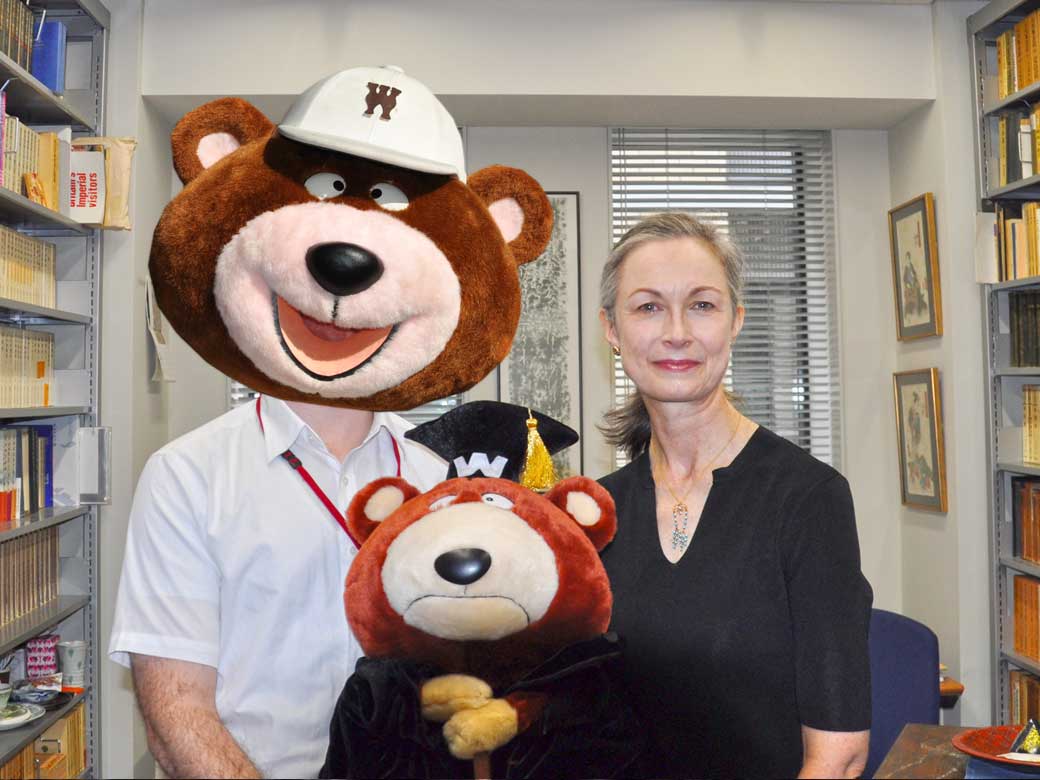“Office Hours” with Tale of Genji specialist Professor Gaye Rowley
Mon, Sep 28, 2015-
Tags
In this volume of “Office Hours,” we speak with Japanese literature specialist Professor Gaye Rowley from the Faculty of Law.
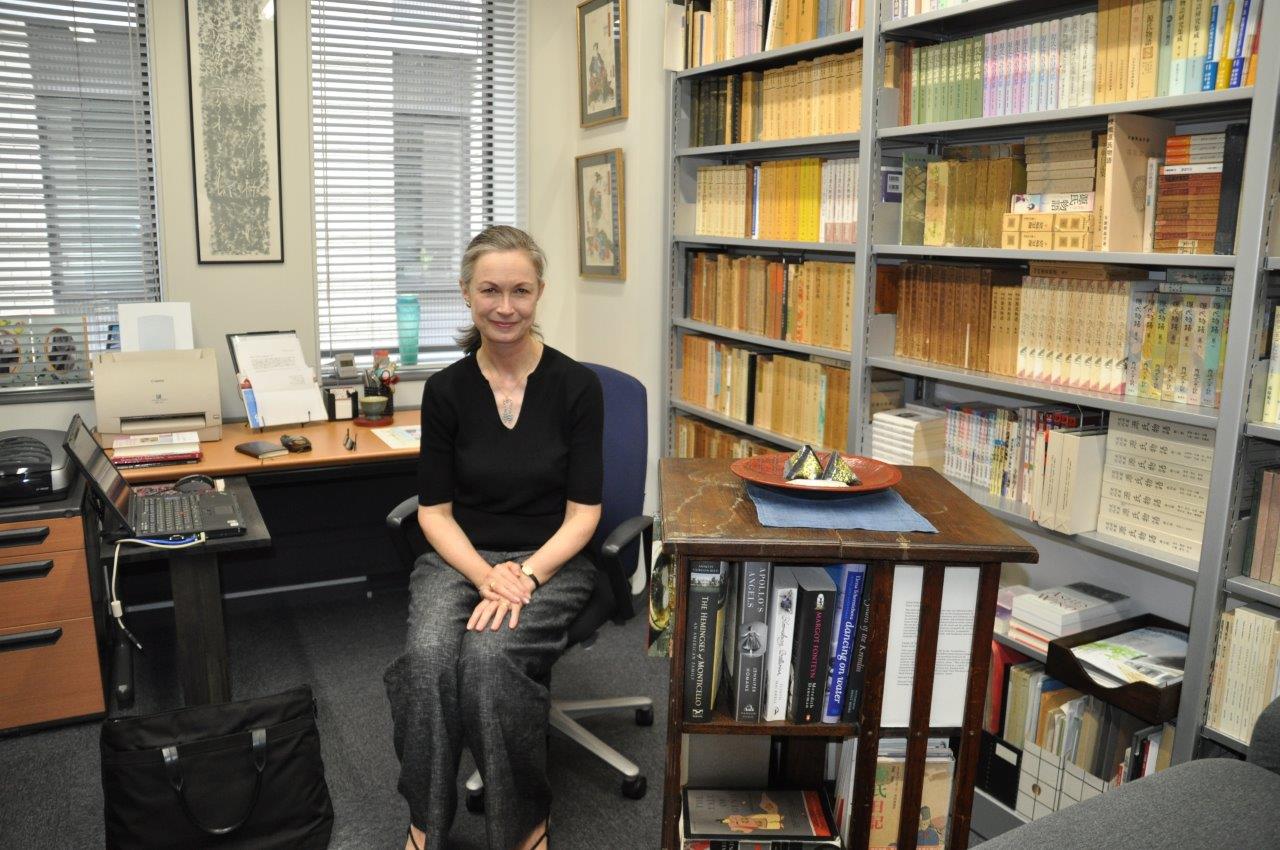
-What do you use your office for on a day to day basis?
Storing books and preparing for classes, but I don’t do any research in this room. I might look things up in some of the books here but writing I do at home. Some of my colleagues who have children work here because it tends to be noisy at home but for me it’s just my husband, me, and the cats. One of the things I like about this job is that you can get up at six in the morning, in pajamas, and work while drinking coffee. You don’t have to go to the office to work. That kind of freedom is one of the great bonuses of working at an academic job in a university.
-I notice you have an intensive reading class for Japanese students where you use an English translation of The Tale of Genji. Can you tell us about this class?
Certainly. There are three such classes in the law faculty and the idea is to offer ambitious students the opportunity to go into a subject in a bit more depth. All of our second year and above courses are taught in English. The days of the “kōdoku” class, where you slowly read through a text and translate it sentence by sentence into Japanese, are long gone. The idea of the Theme classes and the Intensive English classes is to pick a theme, whatever it may be, and study it in English.
-Do you think it’s important for Japanese students to read Japanese literature in English?
Absolutely. After Haruki Murakami, The Tale of Genji is Japan’s most well-known cultural artifact. As a Japanese person, you need to know certain things about Japan so that you can talk interestingly and intelligently to people outside of Japan or people inside of Japan who aren’t Japanese and don’t know much about Japanese culture. The Tale of Genji is obviously one of those works that all Japanese people should know about. Knowledge about The Tale of Genji is relatively widespread, but there are very few students who have actually read it from cover to cover in any language.
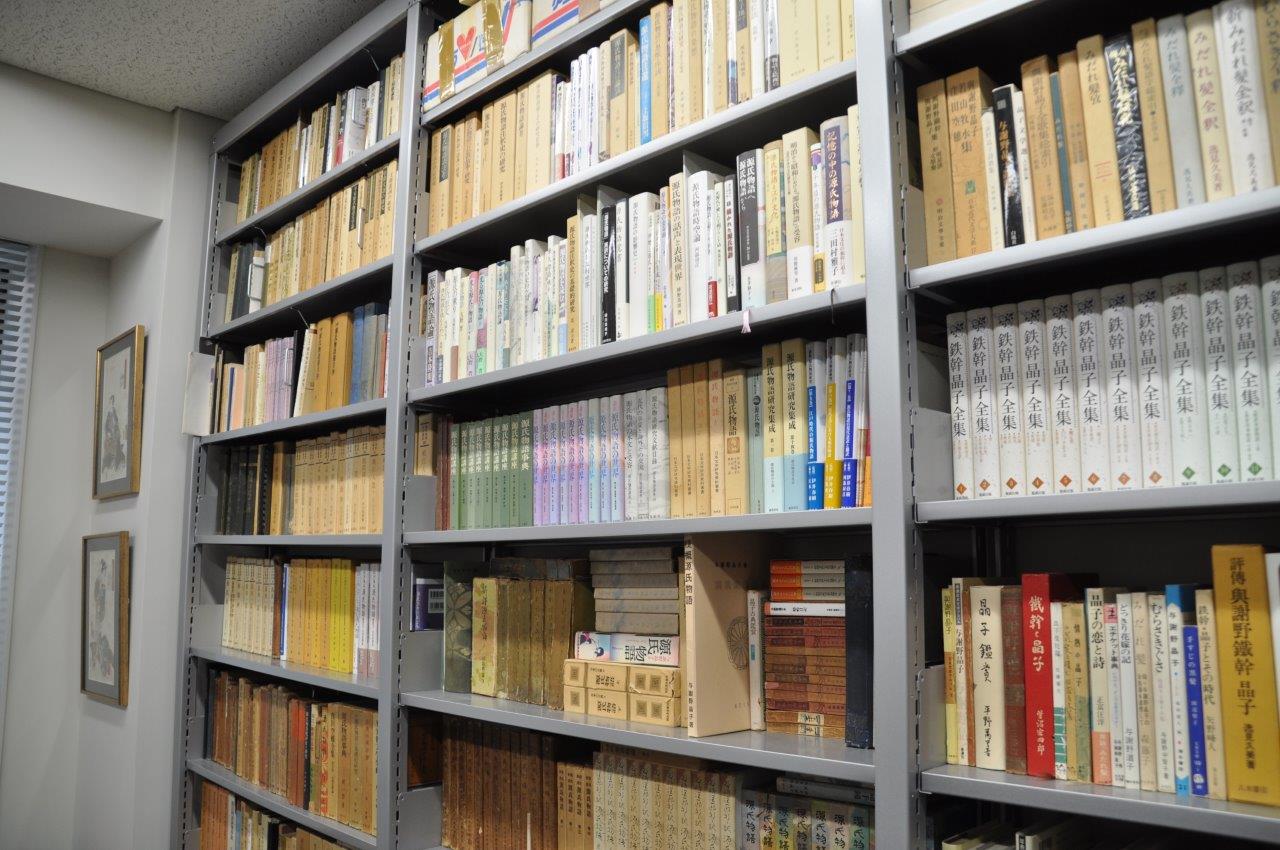
Professor Rowley’s office is home to a plethora of books about The Tale of Genji
-What do you find different about reading Japanese literature in its original language and reading it in English?
In English, because sentences require subjects, you often have to be specific in a way that classical Japanese isn’t. Depending on the translator, things can be worded in a way that suddenly strikes you as odd. For example, in The Tale of Genji there is a character named Higekuro who marries a second wife. After hearing about this, the father of Higekuro’s first wife gets angry and takes his daughter back, effectively ending their marriage. However, there is no Heian period word for ‘divorce’ and no Heian period legal procedure for getting a divorce. In the Seidensticker translation, you suddenly come across the sentence, ‘after the divorce.’ An endless problem as a translator, particularly of a text like The Tale of Genji, which is so very far from our own moment, is to what extent it should be domesticated and made comprehensible to a 20th or 21st century audience. Each translator has come up with a different answer to that question.
-From your point of view, what is the importance of translation?
Where would we be without translation? I read all of these things that I may now read in Japanese in English first, because I couldn’t read classical Japanese. Even someone like Royall Tyler who is one of the world’s great interpreters of Japanese literature in English said that he began to translate The Tale of Genji because he could not read it. Even now I think the number of people who can pick up the original and read it smoothly are very few, even in Japan among literature specialists. Translation is a crucial entry point and for many people, that’s all there is. You can’t learn every language that you would like to learn. Translation is a window to a world other than the world we inhabit.
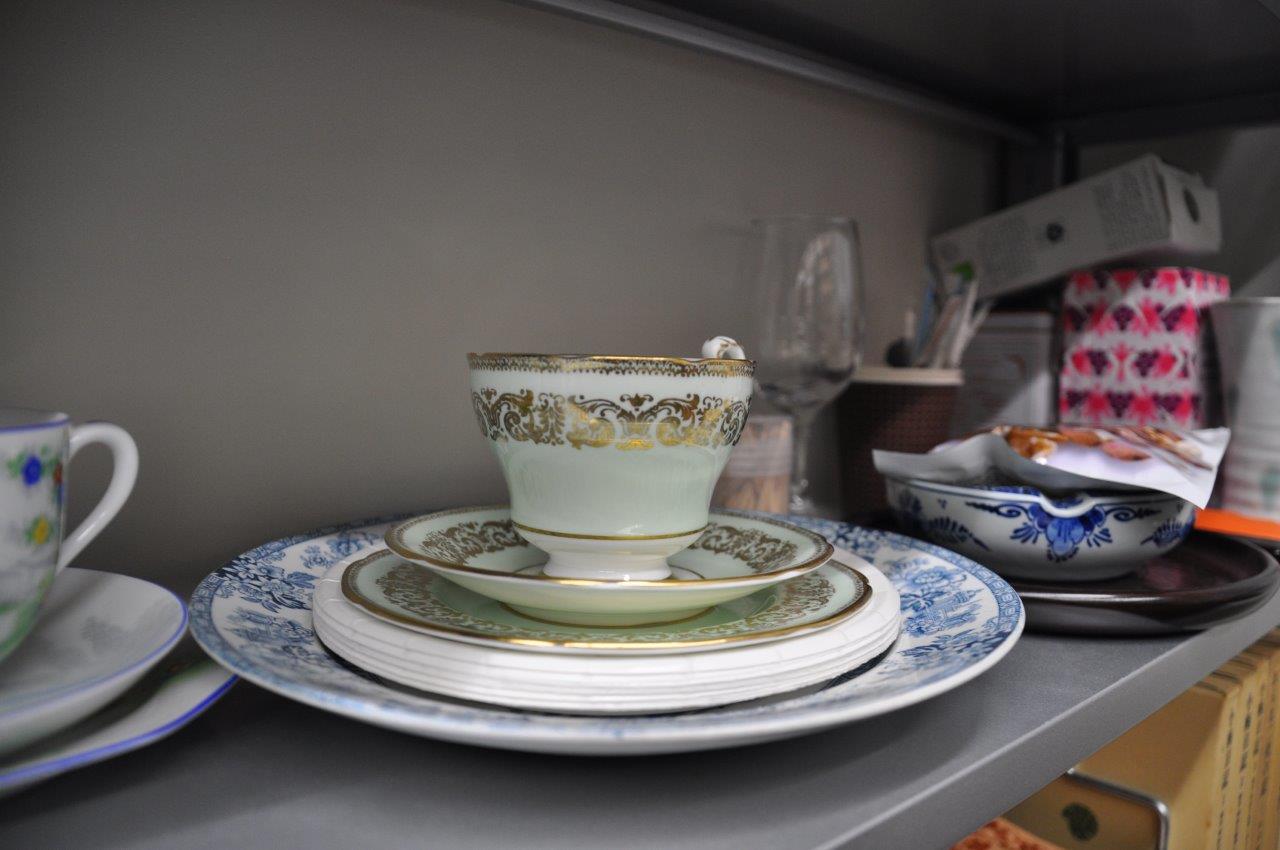
A tea cup set Professor Rowley received from her grandmother
-Another one of your research interests is women authors. Can you elaborate a bit more on this topic?
One of the things that I’m interested in is the way that women have read Genji over the past thousand years. I began with Yosano Akiko and have been moving back in time over the years. I’m currently translating a work by a noblewoman named Ōgimachi Machiko who was the concubine of Yanagisawa Yoshiyasu, an official in the Tokugawa shogunate under the fifth shogun, Tokugawa Tsunayoshi. Her book Matsukage nikki is a sort of biography of Yanagisawa Yoshiyasu which depicts him in glowing terms as if he were the shining Genji. It’s another example of how Japanese women always had The Tale of Genji to look back to and be inspired by. It was always there for them as a source of inspiration. I feel somewhat envious of them always to have had that. It’s also true that if we think about Edo period literature, it’s actually rather hard to come up with the names of any women authors—even though there were women writing. For various reasons, their work was generally not published in print even though it circulated in various other ways.
-What led you to start seriously researching Japanese literature?
I came to Japan in 1978 as an exchange student and spent a year at a Japanese high school. When I went back to Australia I decided that I would keep studying Japanese. I took a couple of courses in Japanese literature and translation and decided I would write my thesis on Yosano Akiko. What struck me reading her work was not really how modern it was but how much it reminded me of things that we had read, such as poems by Izumi Shikibu. Rather than working on Akiko’s ‘modernity’ I decided to work on her relationship to her own literary past. Once you decide to do that, you have to come to grips with The Tale of Genji because Akiko made these two big modern Japanese translations of Genji. I think we can say that Akiko created The Tale of Genji as a ‘shōsetsu,’ or novel that you could read cover to cover. Her work transformed the way Genji was read in 20th century Japan.
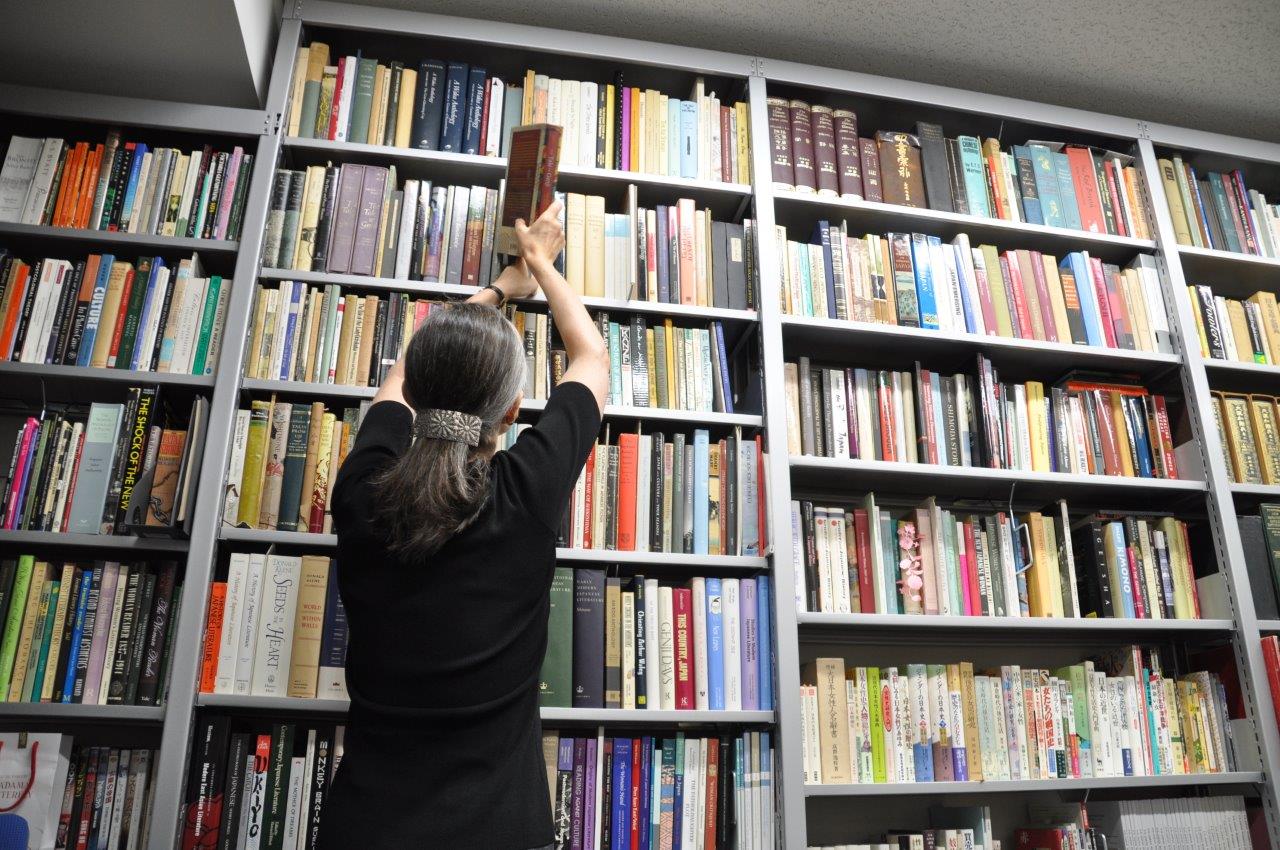
During our visit Professor Rowley showed us several books from her collection
-Before we go, do you have a message for students?
I would like students to know Japan and be able to talk about Japan to people who do not know Japan. This is actually quite difficult to do because when you know something well it can be very hard to generalize. But to be able to explain Japan when traveling abroad or interacting with people who are not Japanese is hugely important.
